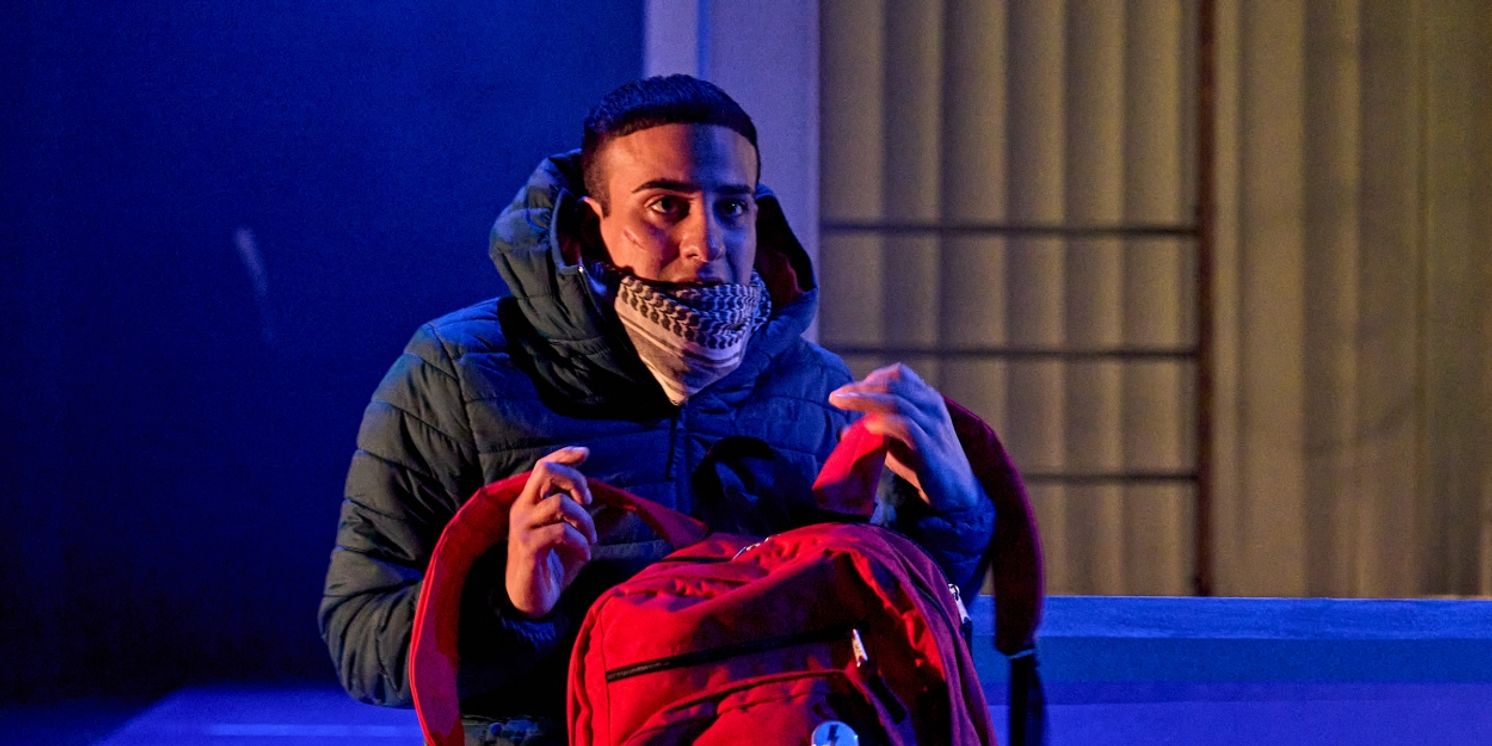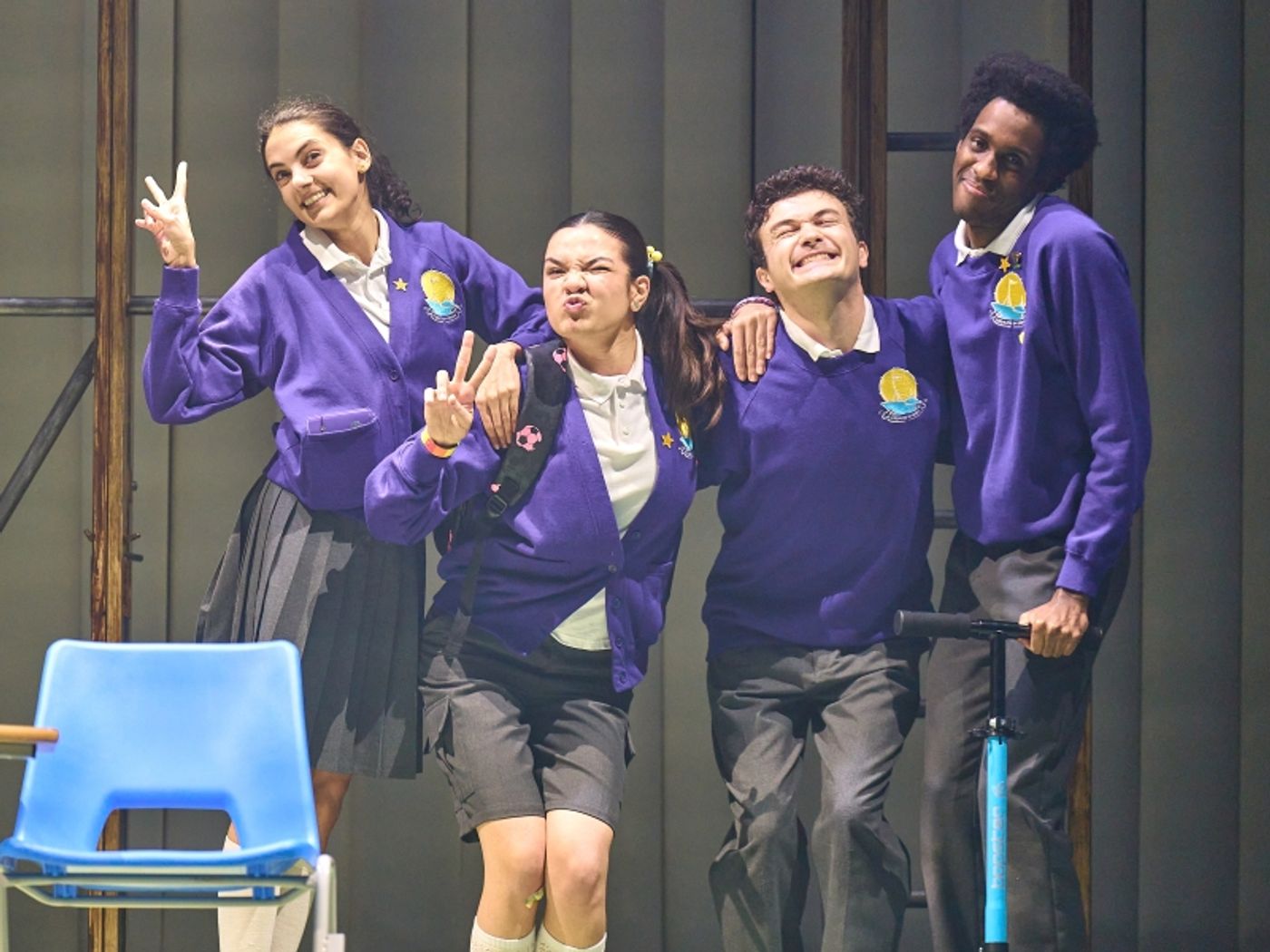Review: THE BOY AT THE BACK OF THE CLASS, Rose Theatre
It intended to tug at heart strings and the standing ovation it received speaks for itself.

![]() Onjali Q. Raúf’s The Boy at the Back of the Class has become a widely read novel since its publication in 2018. The book, and recently adapted play, tells the story of refugee boy Ahmet arriving at a London primary school and having to integrate into the Year Five class. Adapted by Nick Ahad, the play is told from the perspective of a fellow classmate of Ahmet’s, Alexa, as she and her friends learn about refugees and the trails that they face.
Onjali Q. Raúf’s The Boy at the Back of the Class has become a widely read novel since its publication in 2018. The book, and recently adapted play, tells the story of refugee boy Ahmet arriving at a London primary school and having to integrate into the Year Five class. Adapted by Nick Ahad, the play is told from the perspective of a fellow classmate of Ahmet’s, Alexa, as she and her friends learn about refugees and the trails that they face.
A good children’s story can be enjoyed by any age and that is certainly the case with The Boy at the Back of the Class. The mixture of childish behaviours and tongue in cheek jokes meant for older audiences was perfectly balanced, ensuring that this is not just a trip to the theatre for the kids this half term.

Instead, it was a beautifully moving story that encouraged older audiences to take a step back and consider life from a child’s perspective for a minute, to ask simple questions about the world around us. Why is society the way it is? Why do we simply accept that injustice is a part of life rather than actively working to change things? The dilemma of innocence versus ignorance was perfectly presented, the parental points of view being analysed through the children’s eyes.
To play a child as an adult actor is a notoriously challenging task, yet here it was easy to forget that you were not simply watching children trying to unravel the adult world. Those playing the children perfectly embodied their nine-year-old characters, while also switching to adult roles with ease. Sasha Desouza-Willcock guided the entire story with her inquisitive and headstrong depiction of Alexa, encouraging us to see the world through her eyes thanks to a mixture of direct address and compelling performing.
The collaboration between director Monique Touko and her cast is clear to see, for at no point were they not completely in character, the children in the class forever fidgeting, whispering and winding each other up. Each character had their own quirks, with Gordon Millar’s Tom being particularly noticeable for his tendency to fidget with his jumper and stand on the sides of his feet when nervous. Throughout there was the sense of a cohesive unit, every performance being strong and creating a perfect whole rather than there being a single standout actor.
.jpg?format=auto&width=1400)
The result of this was an incredibly striking piece of theatre. The opening of the play set the scene for the physical theatre element that ran strongly throughout the entire performance, with the creation of the sea being equal parts impactful and ideal for the children’s story that it ultimately was.
Designer Lily Arnold kept both the set and costume simple and adaptable, the climbing frame at the back of the stage morphing to become amongst other things the gates of Buckingham Palace.
Confronting audiences with the harsh and simple truths of the experiences of a refugee, this play encourages us to stop for a moment and consider what we can do to help the crises that are taking place.
It is an educational piece that softly taught the younger audience members about the lives of others, but it also tied into the very real experiences of those involved in Refugee Action Kingston and other organisations. At its heart this was a play about social action. It intended to tug at heart strings and the standing ovation it received speaks for itself.
The Boy At The Back Of The Class runs at the Rose Theatre until 22 February
Photo Credit: Manuel Harlan
Reader Reviews
Videos

